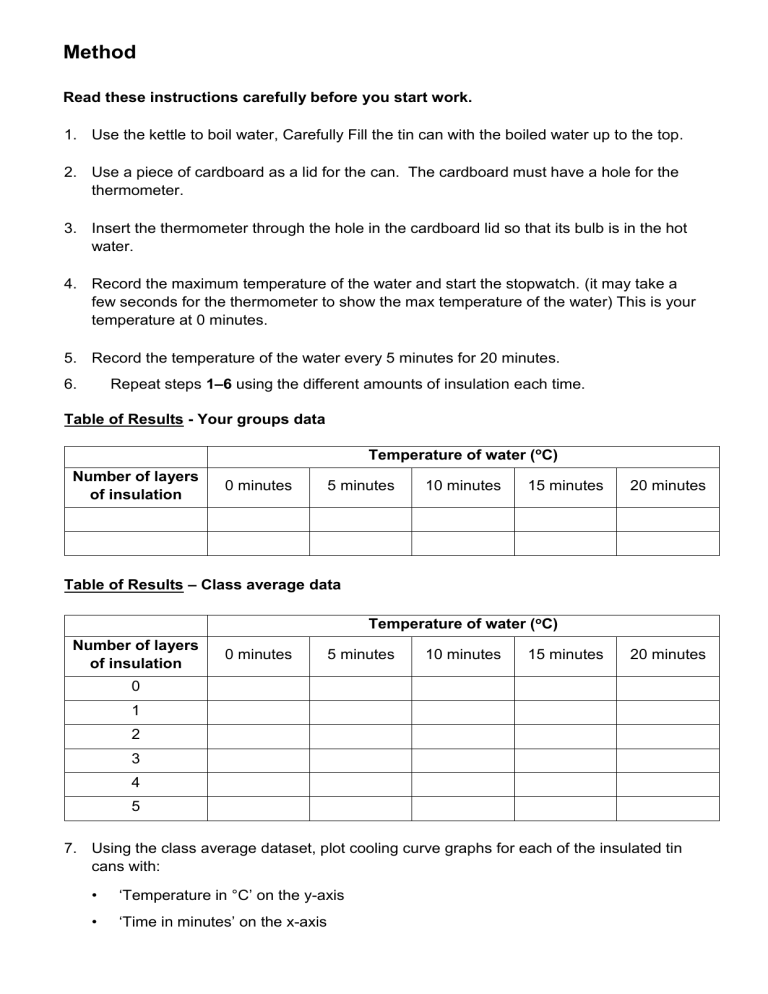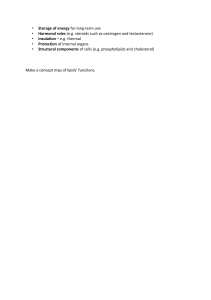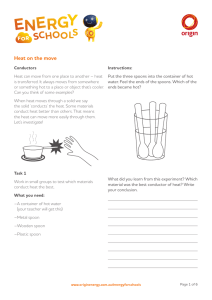
Method Read these instructions carefully before you start work. 1. Use the kettle to boil water, Carefully Fill the tin can with the boiled water up to the top. 2. Use a piece of cardboard as a lid for the can. The cardboard must have a hole for the thermometer. 3. Insert the thermometer through the hole in the cardboard lid so that its bulb is in the hot water. 4. Record the maximum temperature of the water and start the stopwatch. (it may take a few seconds for the thermometer to show the max temperature of the water) This is your temperature at 0 minutes. 5. Record the temperature of the water every 5 minutes for 20 minutes. Repeat steps 1‒6 using the different amounts of insulation each time. 6. Table of Results - Your groups data Temperature of water (oC) Number of layers of insulation 0 minutes 5 minutes 10 minutes 15 minutes 20 minutes Table of Results – Class average data Temperature of water (oC) Number of layers of insulation 0 minutes 5 minutes 10 minutes 15 minutes 20 minutes 0 1 2 3 4 5 7. Using the class average dataset, plot cooling curve graphs for each of the insulated tin cans with: • ‘Temperature in °C’ on the y-axis • ‘Time in minutes’ on the x-axis GCSE Physics required practical activity: Thermal insulation Student sheet – Name: ____________________________________ Required practical activity Investigate the effectiveness of different materials as thermal insulators and the factors that may affect the thermal insulation properties of a material. Apparatus and techniques AT 1, AT 5 Investigating factors that may affect the thermal insulation properties of a material You will measure the rate of cooling of a can of hot water. The beaker is insulated with different thicknesses of the same materials. You will plot cooling curves to determine how the amount of insulation affects the rate of cooling of the water. Risk assessment Take great care when pouring the near-boiling water from the kettle. If you splash any on yourself, immediately wash the affected area with cold water. Equipment You are provided with the following: • thermometer • kettle to heat water • cardboard lid for cans • stop clock • selection of insulated cans with different thicknesses of insulation



